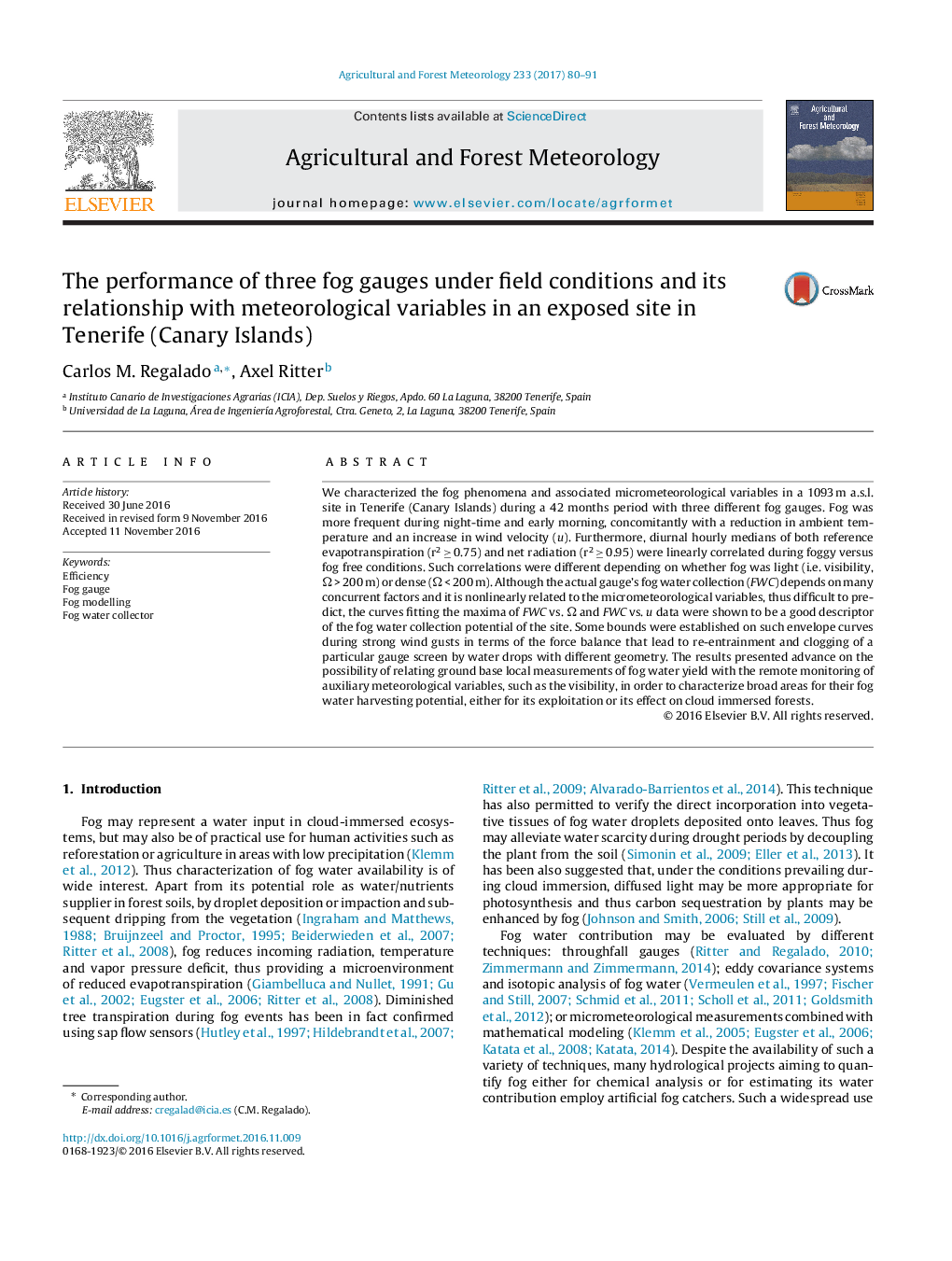| Article ID | Journal | Published Year | Pages | File Type |
|---|---|---|---|---|
| 4758953 | Agricultural and Forest Meteorology | 2017 | 12 Pages |
Abstract
We characterized the fog phenomena and associated micrometeorological variables in a 1093 m a.s.l. site in Tenerife (Canary Islands) during a 42 months period with three different fog gauges. Fog was more frequent during night-time and early morning, concomitantly with a reduction in ambient temperature and an increase in wind velocity (u). Furthermore, diurnal hourly medians of both reference evapotranspiration (r2 â¥Â 0.75) and net radiation (r2 â¥Â 0.95) were linearly correlated during foggy versus fog free conditions. Such correlations were different depending on whether fog was light (i.e. visibility, Ω > 200 m) or dense (Ω < 200 m). Although the actual gauge's fog water collection (FWC) depends on many concurrent factors and it is nonlinearly related to the micrometeorological variables, thus difficult to predict, the curves fitting the maxima of FWC vs. Ω and FWC vs. u data were shown to be a good descriptor of the fog water collection potential of the site. Some bounds were established on such envelope curves during strong wind gusts in terms of the force balance that lead to re-entrainment and clogging of a particular gauge screen by water drops with different geometry. The results presented advance on the possibility of relating ground base local measurements of fog water yield with the remote monitoring of auxiliary meteorological variables, such as the visibility, in order to characterize broad areas for their fog water harvesting potential, either for its exploitation or its effect on cloud immersed forests.
Keywords
Related Topics
Physical Sciences and Engineering
Earth and Planetary Sciences
Atmospheric Science
Authors
Carlos M. Regalado, Axel Ritter,
